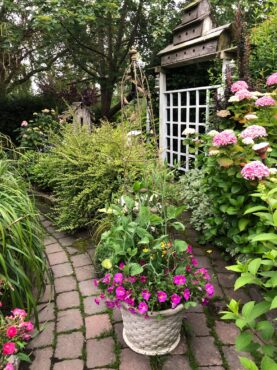 The sweet pea, Lanthyrus odoratus, is a flowering plant in the genus lathuyrus in the family fabaceae, native to Sicily, southern Italy and the Aegean Islands. It’s an annual climbing plant growing to a height of 1 to 2 meters, where suitable support is available. The leaves are pinnate, with two leaflets and a terminal tendril, which twines around supporting plants and structures, helping the sweet pea climb.
The sweet pea, Lanthyrus odoratus, is a flowering plant in the genus lathuyrus in the family fabaceae, native to Sicily, southern Italy and the Aegean Islands. It’s an annual climbing plant growing to a height of 1 to 2 meters, where suitable support is available. The leaves are pinnate, with two leaflets and a terminal tendril, which twines around supporting plants and structures, helping the sweet pea climb.
You can sow seeds in rich soil in your garden, but as they sprout, they may turn out to be too appetizing for birds. I usually start seeds in my home, where there is light — by a window or with a grow light.
Sweet peas are pleasingly fragrant and need part sun to shade. Their feet should be moist and shaded as they get taller. Fragrance varies from sweet orange blossoms to rose scents. They make beautiful bouquets and I consider them a garden delicacy. They remind me of my grandma, Cordelia Dragoo.
I love all the colors and always plant them near an entrance, where I can enjoy smelling them as I pass by. As they bloom and as the blossoms start to be spent, you must deadhead to the bottom of the stem that the blossom is on. You will have sweet pea bouquets all spring and summer.
For optimal sweet pea success:
- Plant at the end of February through March.
- Fertilize weekly with an organic fertilizer.
- Deadhead as blossoms are spent.
- Keep their feet shaded and moist.
- Share with friends.
- Keep a small bouquet on your nightstand — sweet dreams!
- Smell them every chance you get. It’s mood-changing for the better.
My two favorite sweet peas are Mammoth (all colors) and a new one, Raspberry Swirl.









Comments